Recent Commercial Posts
5 Steps To Take After a Sewer Backup
4/1/2024 (Permalink)
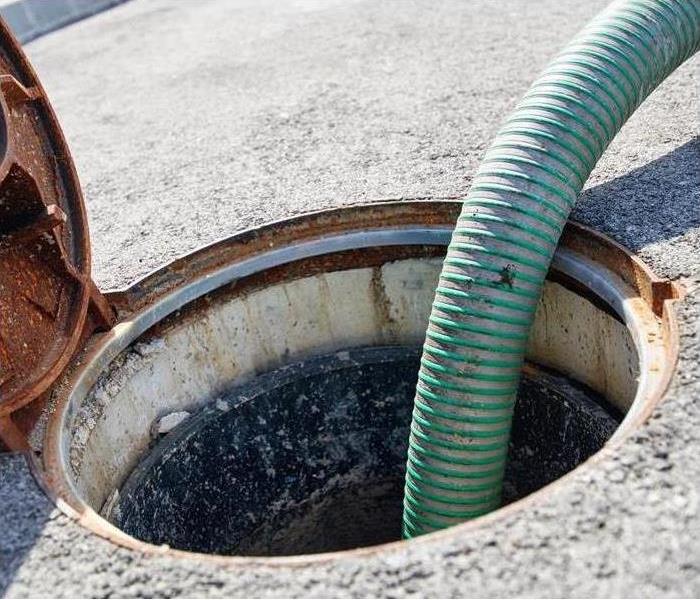 Sewage cleanup in Park City, UT.
Sewage cleanup in Park City, UT.
A sewer backup may be one of the most damaging problems with which you have to deal as a business owner or manager in Park City, UT. Not only is it a disgusting process, but you must also keep employees and customers safe from exposure to germs and chemicals. There are specific steps to keep everyone and your building as safe as possible during sewage cleanup.
Safety Steps For Sewage Cleanup
- Protect Yourself Against Various Hazards
First, it's essential to protect yourself by wearing personal protective equipment. Available PPE includes hair covers, safety goggles, respirators, rubber gloves, coveralls and waterproof shoe covers. Most of this gear can be bought in disposable form to better prevent cross-contamination. The amount of PPE necessary depends on the severity of the sewage. However, if there is a question, more is better than less.
Also, do not walk into any standing water where electrical components are plugged in. You will need to shut off the power to the area because an electrical current can pass through the water. Merely stepping a foot into the room could be extremely hazardous. If you can't safely navigate to the breaker box, call the power company or experienced electrician to turn the electricity off before you take any further action.
- Try Unclogging the Blockage
Next, you must unclog the sewer blockage and stop any running water. Shut off the water supply at the source or opt for the entire building. It could take the work of professionals if the backup is down the line a bit. If you have a flooded toilet, you can use a plunger or drain snake to unclog it yourself.
- Extract All Standing Water
Sewage water contains various bacteria and other contaminants that can quickly spread. During the sewage cleanup process, it's essential to extract the standing water as soon as possible. Standing water can also damage fast, so time is of the essence. If you decide to conquer the task yourself, a wet/dry vacuum can efficiently remove the water and smaller debris.
- Dry the Area and Contents
Once you have extracted all of the standing water, it's time to dry everything in the affected area as quickly as possible. This could mean tearing out water-damaged flooring (carpet will probably be ruined) and even some drywall. You may also need to remove most if not all of your contents from the area to dry them outside and to thoroughly clean them and the affected area.
You can use fans, heaters and fresh air to dry everything. Water damage restoration professionals can dry an area faster with industrial-grade fans and other equipment.
- Sanitize the Area and Contents
Finally, everything must be thoroughly cleaned and sanitized. Be sure to get into tiny spaces, even walls and furniture that have come in contact with the water and contaminants. After experiencing a flooded toilet or another type of sewer backup, performing a thorough sewage cleanup is critical. This can be a very labor-intensive job, even for a small amount of standing water. However, taking time to go through each of these steps can keep everyone safe and prevent avoidable damage to your building and its contents.
Keep Your Losses Low During Business Interruption
7/30/2022 (Permalink)
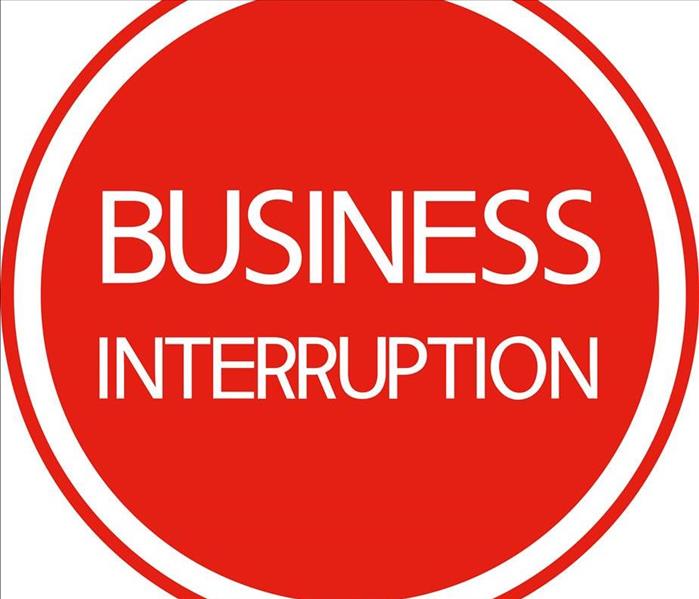 Reduce your losses during business interruption.
Reduce your losses during business interruption.
Anything from a broken pipe in an isolated location to flooding from a natural disaster can bring your commercial operations to a halt. In Salt Lake City, UT, this can mean significant losses and the need for a business interruption claim. The good news is that there are steps you can take to keep your insurance claim down, reduce your losses and get back to your normal routine.
When Flooding Threatens the Well-Being of Your Business
Every year flooding brings businesses to a halt when water heaters malfunction or extreme storms cause water to rise. Business interruption insurance coverage is crucial to surviving any type of major damage to your commercial property:
- Loss due to fire or an explosion
- Large water damage from natural catastrophes
- Equipment malfunctions and breakdowns
- Electrical failures and fires
- Crime or vandalism
Just about every business experiences some type of disruption because of one or more of these risks. An appropriate insurance policy is the best way to make sure your business doesn’t crumble because of lost revenue while you can’t continue with your normal daily routine.
Keep Your Insurance Claim Low
Preventative maintenance is one of the best ways to reduce risks and keep any loss or expense low. Talk to your insurance provider and local resources about the most common risks for your type of company and location. After determining the risks, estimate the cost of possible interruptions, be sure you thoroughly understand your coverage, create your plan for preventing hazardous scenarios and then put together your crisis response plan.
Reduce Losses When Disaster Strikes
In spite of your best planning, it is impossible to prevent all emergencies. When you do have to shut your doors because of damage, work quickly to resolve the issues. The faster you can recover, the lower you can keep your claim. Your insurance company may recommend a water damage cleanup and recovery agency. These professionals have a well-planned approach to bringing any ongoing damage to a halt, as well as an emergency response to prevent additional or secondary harm. Cleanup and repair professionals have the training, equipment and time necessary to get your property back into functional condition and ultimately return it to its “like new” condition.
Open Your Doors and Return to Business
Your crisis response plan is crucial during a disaster. The first part of this plan should cover how to keep employees safe, an evacuation procedure and the steps that employees should take during an emergency. It should outline how to maintain communication with your customers and partners. Other parts of this plan should include a chain of command and specific tasks and responsibilities that employees will carry out during and after the disaster. Create a scripted message, so that all employees can share reliable information that doesn’t conflict with other messages and cause confusion.
With the proper insurance coverage in place, the involvement of cleanup and recovery professionals, and an operational and communication plan ready to go, you can move forward with confidence that you are ready to face flooding and other disasters. You’ll minimize the risk of possible damage and limit the impact that emergency scenarios will cause.
What Happens During Fire and Smoke Damage Cleanup?
7/25/2022 (Permalink)
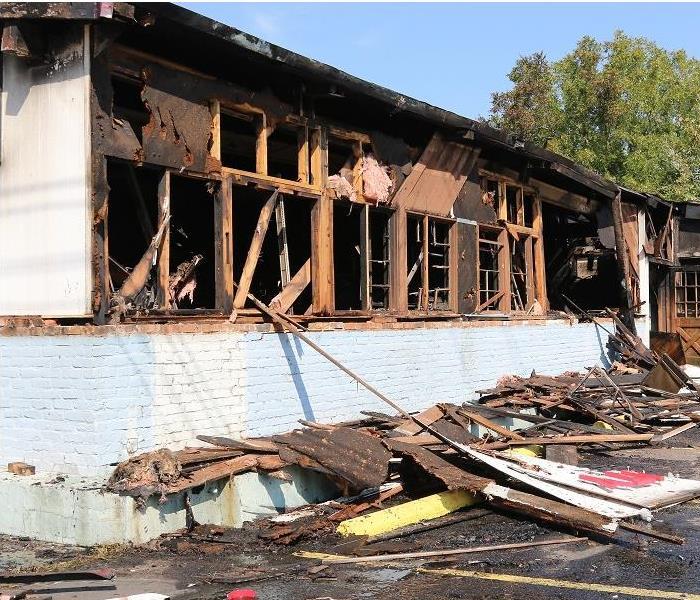 Fire damage
Fire damage
Experiencing a fire at your commercial building in Salt Lake City, UT, can be devastating. What's next? Are you going to have to be out of service for a while? Even the results of a small fire can be costly in terms of replacing lost property, being out of business during the restoration process and restoring whatever can be salvaged. Several types of loss can result from a fire, including charring, soot, and smoke damage. Specific basic steps must be taken to mitigate the amount of loss, clean, and restore the commercial property.
Fire, Smoke and Soot Damage Cleanup Process
Once the flames are extinguished, it's time to begin work to return your building to its pre-fire state. Usually, the best option is to hire fire damage restoration professionals to be confident that your building and salvageable property are thoroughly cleaned, restored and inspected. These experts will typically take the following steps.
1. Assess the Damage
Experts need to perform a thorough assessment of the damage before getting to work. Evaluating the loss will help the professionals determine the best methods to restore the property. From this assessment, they will create a remediation plan based on the type and extent of the loss.
2. Mitigate the Damage
One of the most crucial parts of the process is to mitigate the damage as much as possible. To prevent further loss, technicians often shut off the electricity to the affected area or the entire building and shut off the water main. It may also include roof tarping and boarding up windows and doors until structural repairs can be completed.
3. Create a Remediation Plan
After the loss is under control, the professionals will create a plan to best remediate the water, fire, soot and smoke damage. You will probably see the technicians wearing personal protective gear during the process. This PPE will keep them safe and also help prevent cross-contamination of possible harmful substances. Depending on how long the moisture has been left from extinguishing the flames, mold spores could already grow into mold, creating and spreading more mold spores. These spores can easily be transferred into other parts of the building. The restoration professionals know how to take the safety precautions necessary to prevent this.
4. Cleanup
Restoration technicians use their expertise and professional equipment to clean everything in the affected area as much as possible. This will include removing charred and other unsalvageable materials and cleaning dust, debris and soot from all surfaces. It will also involve smoke cleaning from various materials.
5. Perform Restoration Work
After removing all unsalvageable materials from the area and thoroughly cleaning all surfaces, the technicians will continue working to restore the property to its pre-fire condition. This work will include using air scrubbers to clean the air, using different methods to eliminate smoke odors and rebuilding parts of the structure. It may also include industrial drying techniques because water damage occurs after a fire is extinguished.
Hopefully, you will never encounter a fire at your workplace. However, knowing what to expect if flames break out is helpful. Include the information for your preferred restoration company to have on hand so fire and smoke damage cleanup can begin as quickly as possible. It is also essential to create a fire plan for your employees.
How Pretesting Property Reduces Insurance Claims
5/19/2022 (Permalink)
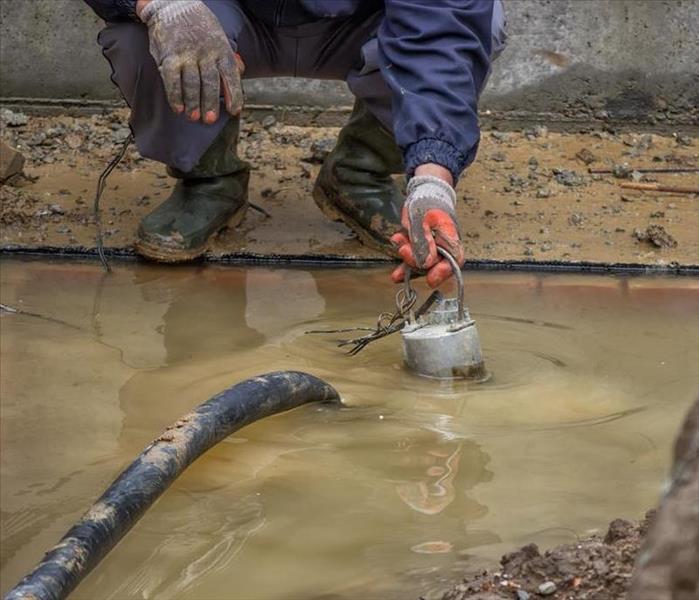 Know more about Insurance Claims. If you have more doubts, just contact us.
Know more about Insurance Claims. If you have more doubts, just contact us.
Is pretesting for damage before claim approval in your customer's best interest? Is the procedure helpful to you, the insurer? Our locally owned SERVPRO franchises seek to help both sides, satisfying our clients and their insurance agencies. Staff members in Salt Lake City, UT work to provide vital data to guide both parties through the restoration and claim process. We can minimize future troubles and filings with swift action and early detection. Here are three main points to know and understand.
Important Points to Know about Insurance Claims
1. Awareness Reduces Insurance Claim Costs and Secondary Damage
Water damage requires intense cleanup because the moisture harms the building and items. Improperly treated or untreated water damage leads to several problems, particularly mold and mildew. Water sits idly within objects and materials, allowing spores to reproduce. These microbes multiply quickly. Within a day or two, an infestation can spread throughout a room.
Without early testing, commercial owners may miss critical steps in the repairs, focusing on the drying procedures and ignoring the potential for eventual growth. What if a room is saturated but isn't visibly detectable? The fungus could grow, requiring a claim in a few months or a year. Furthermore, people may realize that personal objects such as chairs and clothing received impact, requesting property loss reimbursement months after the event.
Prompt detection allows clients to file simultaneously and reduces confusion and debates.
2. Testing Focuses on Immediate Needs and Future Complications
When owners call a team for help, the crew arrives ready to complete a thorough pretesting evaluation. They look to the source, immediately working to resolve the problem. By stopping the water flow and identifying the origin, owners and agents have less to fix.
It's about the present and the future, so experts then begin collecting specimens to note the level of contamination. Air and physical collections provide a clear overview of whether microbes have set into the walls, floor and belongings. Moisture reading tools detail the extent of fluid saturation, and inspections occur within various rooms to note deterioration and structural concerns.
The goal is to identify both visible and invisible sources of immediate and long-term hazards. Catching trouble early allows for early intervention and reduces owner claims.
3. Testing Informs Insurance Agents About Property Conditions
When proprietors submit a claim, you, as the insurance agent, want assurance that this problem did not result from prior negligence or misconduct. Did an owner know that the water heater was leaking? Was there an underlying problem that they should have caught earlier? Business leaders often underestimate the potential for mold and water development from something minor, but it does matter. You need this factor ruled out before you release a claim check.
After an early investigation by remediation professionals, agencies and clients receive a detailed report noting how something happened, what experts can do about it and how the team could prevent future contamination issues.
Pretesting benefits both the commercial owner and the insurer, guiding both through the restoration process and understanding the impact of the damage. Using innovative technology and reacting quickly allows SERVPRO to get ahead of issues, minimizing additional claims.
What To Do If Your Commercial Building's Roof Is Damaged in a Fire
5/11/2022 (Permalink)
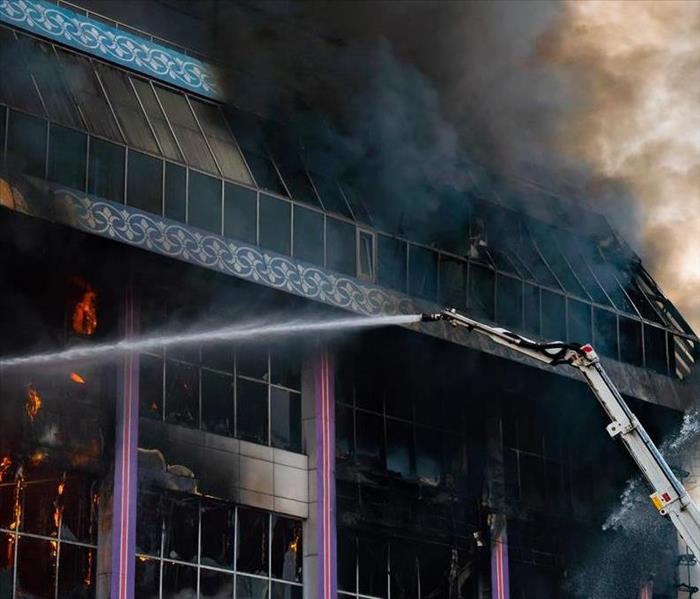 If Your Commercial Building's Roof Is Damaged in a Fire, just Call the Professionals.
If Your Commercial Building's Roof Is Damaged in a Fire, just Call the Professionals.
Even a relatively small fire can cause major damage to your Park City, UT, commercial property. The flames could burn important documents, and the smoke odor could permeate carpets and furniture. However, there can be other causes of harm. Firefighters often cut holes in the roof of a burning property to prevent the flames from growing. This strategy removes the dark smoke that can hinder the firefighters’ visions as they battle the flames. Yet it also necessitates roof repair after the fire has been extinguished.
Hire a Tarp Services Provider After a Fire
You should hire fire cleanup professionals who will put a tarp on your property. A tarp can temporarily cover any holes in the roof, keeping out the elements until the roof has been fully repaired. The experts should also board up the doors and windows so vandals cannot enter the premises. Here are three other steps to take if your roof is damaged in a fire.
1. Call Your Insurance Provider
While professional restoration services can be expensive, the money from your insurance policy should cover at least some of this cost. Ask your insurance representative for a written estimate. You should also ask the rep what else you can do to minimize further harm to the property.
If you do not have property insurance, or if your coverage is limited, you may be able to find help from other sources. Local organizations and public agencies often provide emergency funds. You could also ask the Salvation Army or American Red Cross for assistance.
2. Stay Safe
Do not re-enter your building until firefighters say that you can. After they are done putting out the flames, they will check your gas and electricity systems. Any rainwater that does enter the property through your damaged roof may affect these utilities.
If the utilities are unsafe to use, the firefighters will disconnect them. The fire cleanup experts should tell you when it is safe to turn on the utilities again.
Even if you are given permission to enter the property, you should still be extra careful. Walls and floors may not be as sturdy as they appear.
3. Replace or Restore Valuables
Your commercial property likely has important documents, such as tax records and insurance policies. A fire could burn these documents directly, or it could cause a roof defect that leads to weather elements harming the documents.
You may be able to obtain new copies of some of these items. However, more proprietary documents may be tough to replace. Try to find restoration experts who can salvage important paperwork. Be sure to save the bill or receipt from the remediation company. You may have to show it to your insurance provider.
Excessive roof damage can make the fire cleanup process more difficult. However, by taking advantage of tarp services, you can limit any harm caused by a hole in the roof. Calling your insurance provider, keeping off your utilities if necessary, and having important documents restored or replaced should also expedite the recovery.
Best Tips for Dealing With Puffback Damage
4/13/2022 (Permalink)
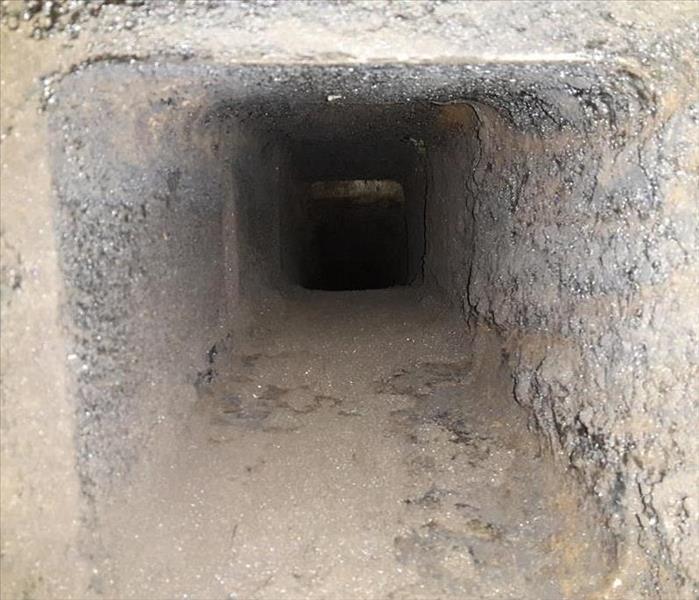 Repairing Puffback Damage needs Experienced Hands. For more questions, contact us.
Repairing Puffback Damage needs Experienced Hands. For more questions, contact us.
A puffback takes place when your oil-burning furnace fails to ignite properly due to clogs, leaks, and other issues. It’s also a sign that your heating system demands the attention of a serviceperson.
Because your system is connected to multiple rooms, this blowing back of soot and smoke not only contaminates the air, but it also leaves a sticky residue on various surfaces that requires the equipment and cleaning techniques offered by a professional restoration services provider. If you experience puffback damage in your property in Park City, UT, here’s what you should know about dealing with the aftermath.
Important Steps After Furnace Puffback
If you detect evidence of puffback or experience it when operating your oil furnace, take the following steps first:
Call 911: Because a puffback happens due to an explosion, you’ll need the fire department to either extinguish any fires or confirm that there are none.
Shut down: Turn off the power to your furnace and heating system.
Evacuate: A furnace puffback increases the level of carbon monoxide in your facility, so exit the premises as quickly as possible.
Open up: Open windows and doors if possible on your way out.
Unplug: If safe, unplug electric and electronic devices as you exit the building
Discard: After returning to the building, throw away food and other perishables with soot and smoke damage.
Call: Schedule a certified technician to repair your furnace and hire professionals to clean affected rooms and belongings.
The Need for the Professional Touch
Cleanup of puffback damage requires a professional approach for multiple reasons:
DIY cleaning methods aren’t effective for removing smoke and soot from surfaces. In fact, often these approaches can exacerbate the situation. For example, vacuuming will push soot particles deeper into carpets, rugs, clothing, and upholstery, leading to permanent stains.
Special cleaning techniques prevent soot and odors from being embedded in walls, floors, and ceilings. It’s impossible to cover the oily residue with primer and paint.
Glass, metal, and other surfaces are susceptible to corrosion and other damage if left exposed to smoke and soot.
Furnace puffback will not only cover every surface, but particles may end up in cracks and openings below floors, behind walls, above ceilings, and other difficult places to reach.
Your damage restoration services provider has the experience, equipment, and expertise to restore your property to pre-damage conditions, including cleanup of damage due to fire and water if needed. The experts will prioritize cleanup and repair over replacement to help control costs. If your building requires reconstruction, the pros can take care of that also. While you hope to never experience puffback damage in your building, it’s important to be aware of the gravity of the situation.
Assessing the immediate damage, fixing your heating system, and cleanup should only be handled by the pros, namely the fire department, a certified technician, and a restoration services provider respectively.
This is your charge as a responsible property owner, committed to proper maintenance and upkeep for the benefit of your building occupants. Keep in mind that insurance companies prefer to work with professional restoration companies
5 Tips To Minimize Commercial Winter Storm Damage
3/9/2022 (Permalink)
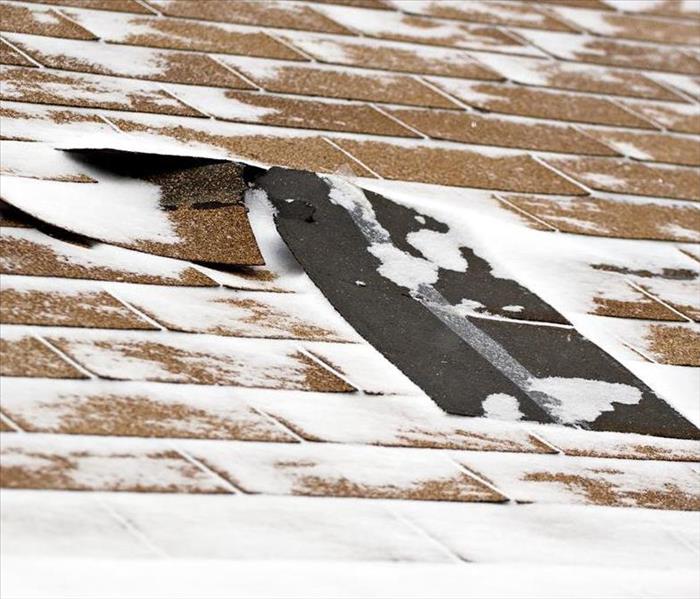 Follow These Tips and Minimize Commercial Winter Storm Damage in your Park City, UT property.
Follow These Tips and Minimize Commercial Winter Storm Damage in your Park City, UT property.
For businesses in Park City, UT, a harsh winter storm is a given, not a maybe. Although Mother Nature may be unpredictable, there are ways to help protect your business from the snow, ice, sleet and wind. Below are five tips to minimize damage and keep your business thriving during harsh conditions.
1. Create a Business Continuity Plan
While storm damage may not be completely unavoidable, developing a business continuity plan helps a business better handle an unwanted disruption. These plans are essential to protect assets and employees while still getting the job done. A plan should include a detailed outline of all business procedures and steps to take when bad weather hits. This should include backup sites to conduct business, team member responsibilities, vendor contact information and a risk assessment.
2. Watch for Weather Warnings
Maintaining a pulse on potential bad weather is essential. Regularly check forecasts to be better prepared for adverse weather coming your way. By doing so, business owners will have more time to make preparations for the impending winter storm. Luckily, there are many apps for smartphones that provide instant updates on any weather warnings or approaching storms. It also may be worth assigning a person to be in charge of this task.
3. Prevent Pipes From Freezing
Winter weather may bring ice and snow to mind, but flooding from a pipe break is also a common concern. If the building's pipes are not insulated, now is the time to call a plumber to make that happen. If cold weather hits, ensure that the building’s temperature doesn’t dip below 55 degrees. Make sure that any outdoor irrigation systems or hoses are drained.
4. Stay on Top of Roof Maintenance
Heavy snow, high winds and ice dams can do a number on your roof. Since its job is to protect your business, it’s vital to stay on top of roof maintenance and repairs. It is ideal to have the roof inspected by a professional annually. Regular checks should also be done after any type of storm. Even a minimal amount of damage may turn into a severe problem when snow piles up.
During inspections, check for any supports that are compromised or missing material. Once snow sits on these areas, it may lead to a leak or collapse. No matter the time of year, never wait to make a roof repair.
5. Get a Generator
Doing business in the modern era often means investing in a significant amount of electronic equipment. From servers to scanners and desktop computers, a power outage means that business comes to a grinding halt. A generator is a smart investment to keep the lights on and the business running as normal. It will also help ensure that the temperature remains above freezing, which will also help reduce the risk of frozen pipes.
As the cold season sets in, a winter wonderland may easily turn into an expensive endeavor if your property sustains damage. By staying on top of maintenance and being prepared, business owners are able to minimize the effects of a winter storm.
Commercial Fire Damage 101
2/8/2022 (Permalink)
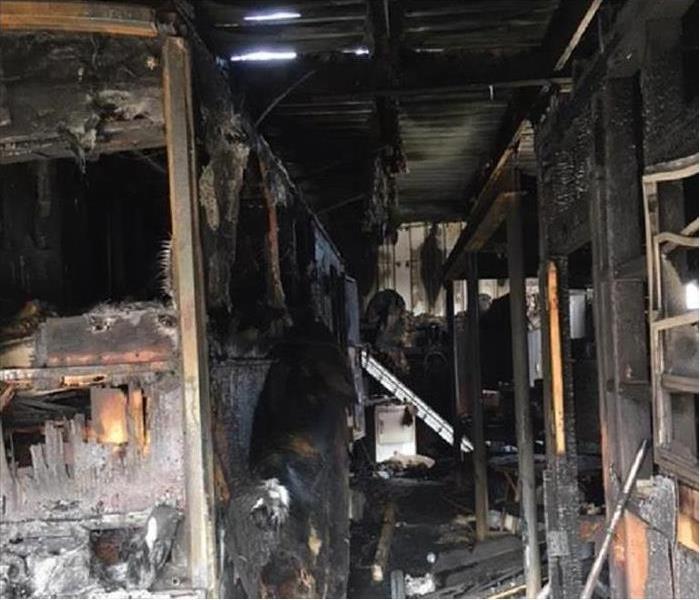 Commercial Fire Damage at a business in Salt Lake City, UT.
Commercial Fire Damage at a business in Salt Lake City, UT.
When your business is on fire in Salt Lake City, UT, you are grateful for every fire truck that responds to your 911 call and every firefighter who holds a fire hose to help put out the blaze. After the last firefighter has coiled up the fire hose and boarded the fire truck to head back to the station, however, you may get your first glimpse of what kinds of fire damage and soot damage with which you are left to cope.
Regardless of whether the fire damage and soot damage was caused by an electrical fire or a utility room fire, it can still be some of the most extensive and complicated commercial fire damage to handle as a business owner. You can get the smoke damage removed and have your fire sprinkler system cleaned and maintained properly to avoid a future electrical fire or utility room fire when you retain the services of a professional commercial fire damage restoration company.
Immediate Response
Despite your best fire suppression efforts to prevent a utility room fire or electrical fire in your business, you still may have to face the possibility of dealing with an extensive commercial fire at some point. Whether the blaze starts because of a faulty fire sprinkler system or simply because your fire suppression tactics were outdated, it can still leave lingering and devastating smoke damage, fire damage, and soot damage in every corner of the building.
As you view the fire damage and soot damage, you might wonder how you can ever get the fire sprinkler system repaired and the rest of your building restored. It all may look like more than you can handle alone.
In fact, the smoke damage as well as water damage from the fire hose and firefighter efforts may be much more than what you are used to coping with by yourself. Rather than tackle such a job unprepared and without the tools you need, you can get the matter dealt with more effectively by retaining a professional fire restoration company.
Fire restoration professionals are trained to respond quickly to and be ready to clean up after an electrical fire, a utility room fire, or any other kind of blaze that impacts your business. After the last firefighter has left and the remaining fire hose rolled up onto the fire truck, the fire restoration contractors can move in and take over the cleanup efforts.
First, they will assess the commercial fire damage that has been inflicted on your building. Based on their findings, they will devise a fire restoration plan that will involve full cleanup of the premises including the inspection and repairs of your fire sprinkler system.
They will use the most modern equipment and cleanup methods to wipe away all signs of water and smoke damage left behind by the firefighter crews. The contractors will also clean up the foam sprayed out by the fire truck, which is commonly used to put out electrical and utility room fires.
Depending on the severity and extensiveness of the commercial fire damage, the contractors may use chemicals like bleach and ammonia as well as gear like shop vacuums and water pumps to dry out and clean up the premises. They also will ensure that the methods they use to clean up and restore the building will be in line with the fire suppression practices that you plan to use to avoid future fires.
You may employ the best fire suppression tactics to keep your building safe. Even so, you still might find yourself the victim of a fire that leaves behind significant damage after it is extinguished.
Because the future of your business relies on how well you deal with the aftermath of a fire, it can be vital that you retain professional fire restoration services rather than try to handle the crisis alone. You can get your business fully restored by entrusting its cleanup to professional contractors.
SERVPRO professionals of Salt Lake City have the specialized fire restoration training needed to restore your home to pre-fire condition.
6 Indications You Need Professional Pipe Burst Cleanup
1/13/2022 (Permalink)
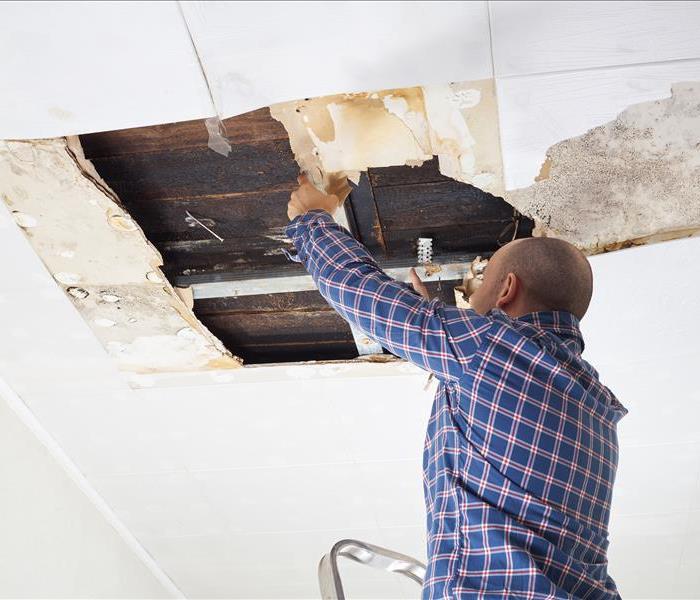 If you find these signs of Pipe Burst in your Park City, UT property, do not hesitate in contact us.
If you find these signs of Pipe Burst in your Park City, UT property, do not hesitate in contact us.
Many property owners avoid hiring restoration professionals unless the property has experienced a disaster such as major flooding or a major fire. Unfortunately, this move can lead to extensive, lasting damage and costly repairs. When pipe burst cleanup is necessary, these property owners may wonder whether it's best to call in a cleanup team or attempt to fix the problem on their own. How can you tell when it's okay to address property damage on your own and when it's necessary to call a restoration company?
Signs You Need a Professional Response for Pipe Burst Cleanup
It doesn't take long for water to cause a lot of damage, and you need to act quickly to prevent that from happening. You need to know when to contact professionals before a broken pipe or sound of running water happens. If your situation includes any of the following elements, you should act quickly to contact a water and sewer cleanup company:
1. Indications of Damage
You may not realize that there's trouble brewing for your Park City, UT property. There are several signs that damage is taking place even though there wasn't an immediate cause of trouble:
- Increase in utility bills
- Flaking or bubbling paint
- Water spots
- Musty, moldy smells
- Pools of water
2. Electrical Complications
If there is any chance that water has come into contact with wiring, outlets, or any other source of electricity, you should clear the area and contact professionals. When you consider the fact that touching an appliance with damp hands can cause a powerful electric shock, the risk of electrocution during flooding becomes more powerful.
3. Unseen Damage
When water spills from an overflowing toilet or gushes from a broken pipe, there is immediate and obvious damage on the surface. Unfortunately, moisture often seeps underneath the flooring, behind drywall, and into other spaces that are out of sight.
Without professional equipment, it is very hard to measure how widespread the unseen damage has become. If pockets of humidity are untreated, mold and deterioration will continue to spread and cause more expensive damage.
4. Exposure to Contaminants
Water from the sewer system is often "black" water, meaning that the water contains feces, chemicals, and other contaminants. Even water that was clean when it first burst from pipes may pick up chemicals as it rushes past insulation, rodent droppings, and household cleansers. This type of exposure can become dangerous during pipe burst cleanup and should be left to professionals with the right protective gear.
5. Need for Quick Resolution
Many property owners can't afford to shut down their property for drawn-out repairs and restoration. Whether you can't sacrifice manpower to clean up or you're concerned about shutting down your operations for days or weeks at a time, a professional response is best. Technicians have the time, supplies, and other resources to thoroughly and efficiently return your property to its original condition.
6. Equipment To Save
Water affects appliances, furnishings, and other belongings in a variety of ways. Professionals can help you decide what can be cleaned and salvaged after flooding. Recovery from flooding, pipe burst cleanup, and remediation from a slow, seeping leak doesn’t always require a professional response. However, when you want a full, satisfactory recovery, the best tactic is to bring in trained technicians
Business Claims: Making a Disaster Claim
12/9/2021 (Permalink)
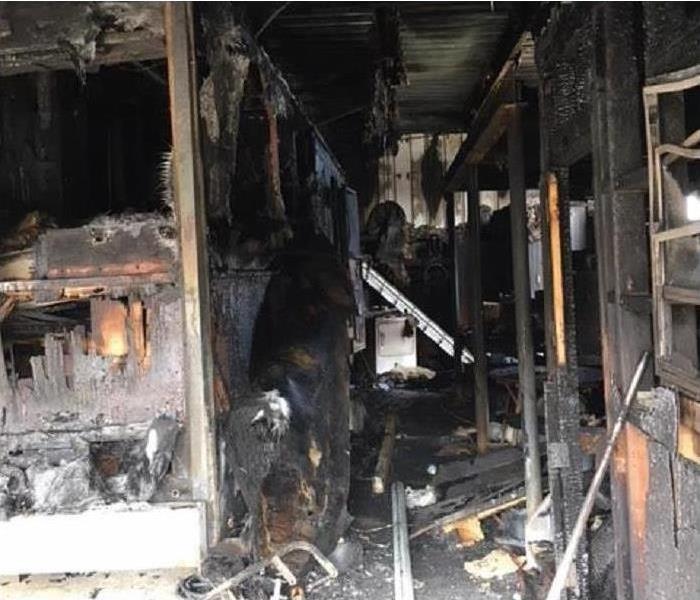 Fire damage in Park City, UT.
Fire damage in Park City, UT.
Fire Claim Process
While a blaze burning through your facility and your inventory is devastating enough, the fire damage can leave your property and your business boarded up for months. This is why it is essential to start the fire claim process immediately so that you can minimize the extent of the business interruption and get back to work quickly.
1. Call Your Insurer
While the first calls you make are to emergency services and family, the third call you should make after a fire is to your insurer. You want to make this call immediately after a fire to ensure that the claims process is initiated at the earliest possible moment. The longer you wait to make a claim, the longer it will take to get your business up and running.
2. Mitigate Further Damage and Loss
After you initiate the fire claim, you will want to get a fire restoration specialist from the Park City, UT, area on the scene to board up and tarp your facility, mitigating further damage and loss. If you already have a plan in place with a restoration expert, then call them and get the process started. Keep in mind that your insurer may require you to mitigate further loss, meaning that if you don’t, then your coverage may not kick in.
3. Keep Receipts
As you begin the cleanup, be sure to track all of your expenses by saving and tallying all receipts. When the adjuster arrives, they will want a full record of the damages incurred and the mitigation efforts made to reduce further property loss and damage.
4. Make a Record of Loss
Additionally, you should walk your property, photographing all damages to show your insurance adjuster. This record of loss will be used when evaluating your claim. You should also include any relevant receipts for the damaged property so your insurer can create an accurate valuation of the overall loss.
A fire claim may seem like a confusing process, but as with every bureaucratic process, there are appropriate steps to take. After a fire, just make sure to call your insurer, mitigate further damage, keep receipts and make a record of loss.
Rain Isn’t the Only Thing To Worry About During a Storm
6/22/2021 (Permalink)
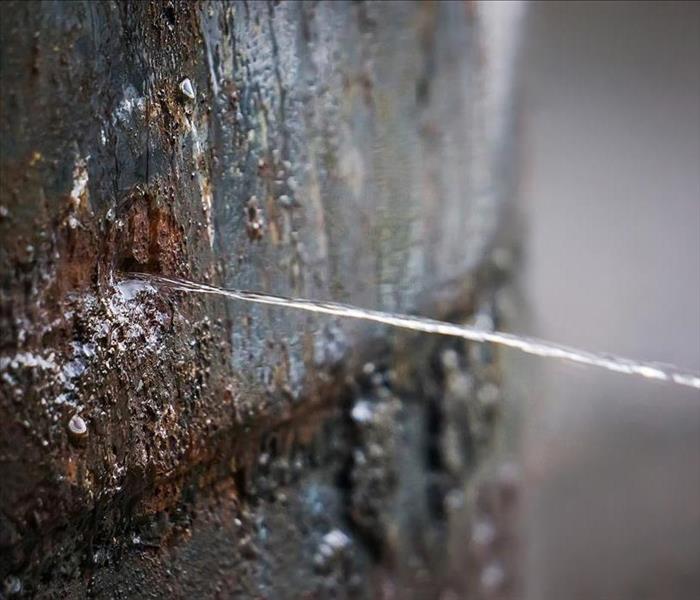 A winter storm can cause bursting pipes.
A winter storm can cause bursting pipes.
When you think about your business flooding, your mind might automatically go to rain and storm surge. This is not always the case. During winter storms, you have to worry about things like a burst pipe due to freezing conditions. Fortunately, there are a few things that you can do to prevent this type of flooding from happening.
4 Things To Do To Prevent Flooding
Drain What You Can
Drain water from where it builds up.
- Pools
- Pipes
- Sprinkler supply lines
- Toilet tanks
No matter where your business is, these things should be drained before a bad storm, if only to prevent standing water from becoming a problem.
Close Valves
Depending on the type of pipe, you may want to close off any valves before you drain them. A burst pipe is easily prevented by making sure that it doesn't have water in it. No water usually equals no freezing or bursting during a storm.
Prevent Freezing
Aside from insulation, there are a few ways you can prevent a frozen pipe. One way is to make sure warm air is circulating around your plumbing. You can leave sink cabinets open or prop your office bathroom door open if your heat is on in the building.
You can also leave your faucets dripping. Moving water is less likely to freeze. You can also keep your climate control system set higher than you normally would at night. Although this might increase your heating bill, it is a lot less expensive than having to replace pipes and utilize a flood remediation company in Salt Lake City, UT.
Insulate Pipes
If you cannot completely drain pipes or as an added measure of protection, make sure your pipes are insulated. You can purchase sleeves and other forms of insulation to make sure that your pipes are protected. In the case of pipes that you cannot insulate, you can wrap them when winter storms are imminent.
No matter what type of storm it is, a burst pipe can lead to big problems for your business. You can prevent this from happening.
Prevent Mold and Other Secondary Damage
6/3/2021 (Permalink)
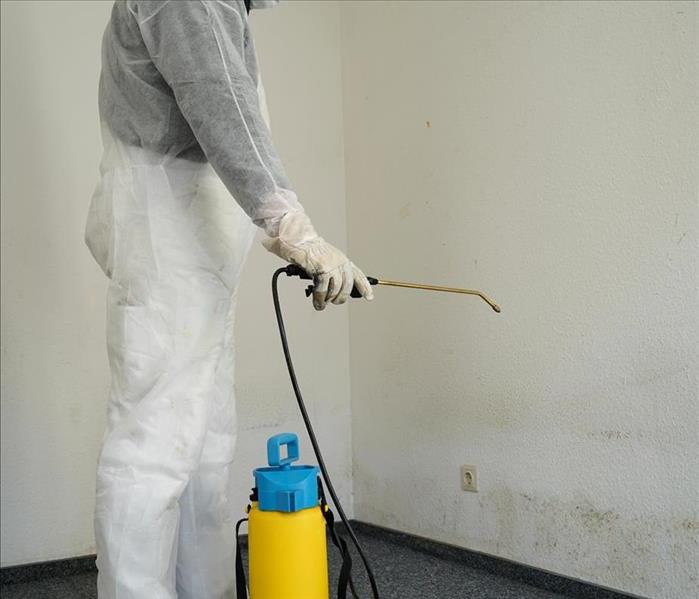 Untreatted water damage can lead to black mold.
Untreatted water damage can lead to black mold.
Molds exist naturally and over thousands of years have developed the ability to survive in harsh conditions. However, some circumstances provide an open invitation for black mold and other varieties to move in:
- High humidity levels
- Organic materials
- A day or two
When flooding, pipe leaks, or other water damage has affected your Salt Lake City, UT, commercial property mold growth is a concern as part of the possible secondary damage.
A Second Wave of Trouble
It's not surprising that water causes a significant amount of property damage, and property owners generally move quickly to prevent lasting destruction. Secondary damage, on the other hand, sometimes goes unnoticed until the problem has grown to expensive proportions. When water is allowed to sit for days or even hours, new damage occurs:
- Black mold growth
- Corrosion
- Electrical damage
- Wood rot
The damage caused directly by flooding or a burst pipe is primary damage, and the damage that develops as the water sits is secondary.
Your Best Course of Preventative Action
It is possible to prevent or at least limit secondary water damage. After addressing the initial event, it's time to take preventative steps:
- Work quickly to combat high humidity caused by evaporating water. The added moisture in the air warps and weakens building materials, such as wood and drywall. Remove water, plug in fans, and increase ventilation as much as possible.
- Make sure that all surfaces are completely dry. Mold often lurks behind the walls, in the vents, and under the carpets. Ensure the safety of your commercial property by hiring cleanup and restoration professionals with the experience and resources to locate and address problem areas.
- Chemical biocides are usually required to ensure that existing mold is treated successfully. It is also necessary to prevent future colony growth. Some filtration devices and sanitization techniques remove spores before they settle on vulnerable surfaces.
Don't give black mold time to cause secondary damage. Act quickly when water affects your property to completely dry and clean all surfaces to protect your property's long-term survival.
What To Do When You Have Black Water From Flooding
4/12/2021 (Permalink)
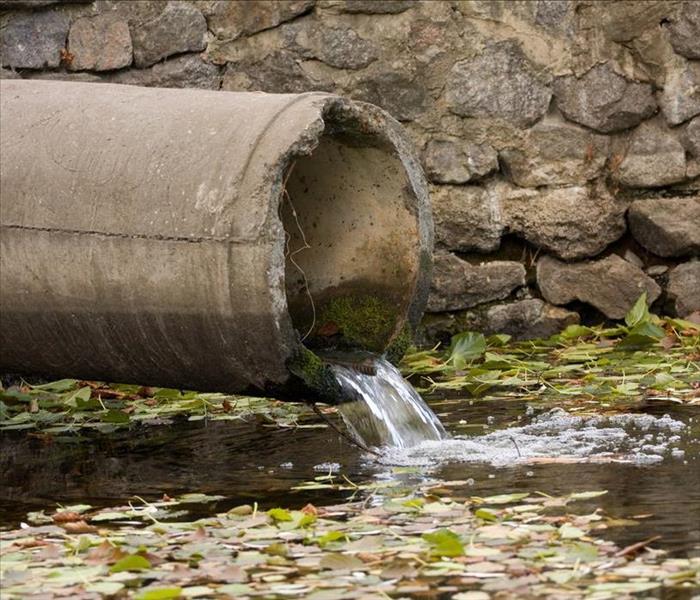 Sewage water is called black water.
Sewage water is called black water.
When you have flood water in your building it is important to remove it as quickly as possible to mitigate the amount of water damage to your property and reduce the chance of future problems, such as mold growth. Before you can begin removing the water, you must first determine what type of water is present in the structure.
Categories of Water
The type of remediation you need depends on how the water in your structure is classified. Water from flooding is categorized in three ways:
- Water from a source that does not contain excessive microbial content is called clean water. Water from a broken supply line is an example of clean water.
- Water that contains a large number of microorganisms and their nutrients is considered gray water. Water from a sump pump failure is an example of gray water.
- Water that is grossly unsanitary because it contains pathogens such as sewage is called black water. Contaminated flood water is one such example.
Remediating Black Water
This type of water may contain hazardous substances such as human or animal waste, pesticides, gasoline, and heavy metals. Because special equipment and training are needed to safely remove this water, contact a professional storm damage remediation company in Salt Lake City, UT, rather than attempt to remove it yourself.
Standing water should be removed immediately and disposed of in a septic waste transporter or sanitary sewer system. The building should be dried out as soon as possible to reduce the spread of bacteria and mold.
Workers should use protective gear, such as respirators, goggles and rubber gloves when removing this type of water and wash their hands with soap and water before smoking, eating, or touching their mouths.
Because of the risk of contamination, flood water should always be treated as black water. Prompt remediation will reduce the amount of property damage and the risk of exposure to contaminants.
3 Ways Business Interruption Insurance Protects Your Business
3/15/2021 (Permalink)
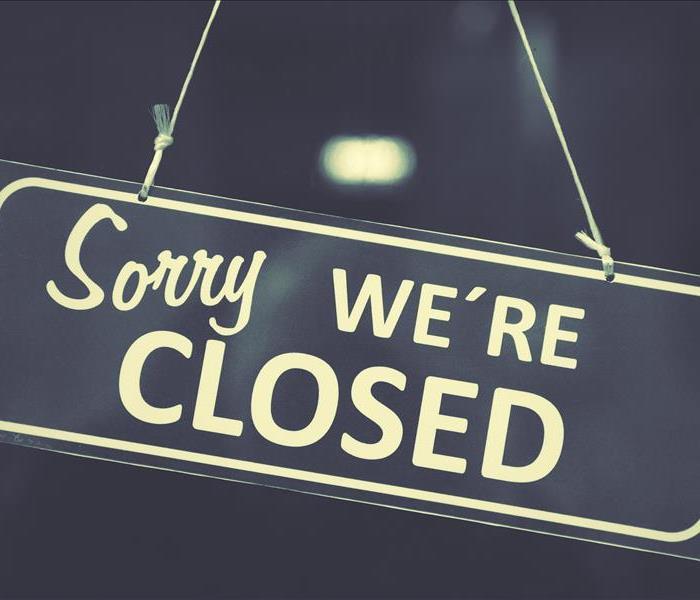 Protect your business with interruption insurance
Protect your business with interruption insurance
Interruption insurance provides coverage for income lost due to damage to a business caused by a covered cause of loss. There are multiple ways that this coverage helps protect your business, including these three.
3 Ways That Business Interruption Insurance Protects Your Business
1. Replaces Lost Income
If a covered cause of loss causes damage to your property that results in lost income due to a business interruption, destruction of inventory or another issue, your insurance will compensate you up to the limits of the policy. The amount of reimbursement is based on your preloss earnings and is usually calculated as revenues less ongoing expenses. For example, if a severe storm damaged your roof, leading to water damage in your building that forced you to close while a restoration service in Salt Lake City, UT, worked to dry out your building, you may be compensated for the lost revenue that resulted from that closure.
2. Covers Extra Expenses
In addition to replacing lost income, interruption insurance provides reimbursement for extra expenses incurred due to damage from a covered cause of loss. For example, if your building was damaged in a fire and you had to temporarily move your business to a different location while fire restoration repairs were being made, the cost of moving to and renting that location would be covered as an extra expense.
3. Helps Businesses Re-Open Faster
Without coverage for lost income and extra expenses, many businesses struggle to make payroll and cover ongoing expenses after a loss. This can cause some businesses to close permanently. Business interruption coverage makes it easier for businesses to cover immediate expenses and return to operations as quickly as possible.
Interruption insurance protects businesses from the financial risks of not being able to operate during the period between when damage occurs and when the business can resume normal operations. An insurance professional in your area can help explain how this coverage can benefit your business.
Tips for Maintaining Your Fire Sprinkler System
2/22/2021 (Permalink)
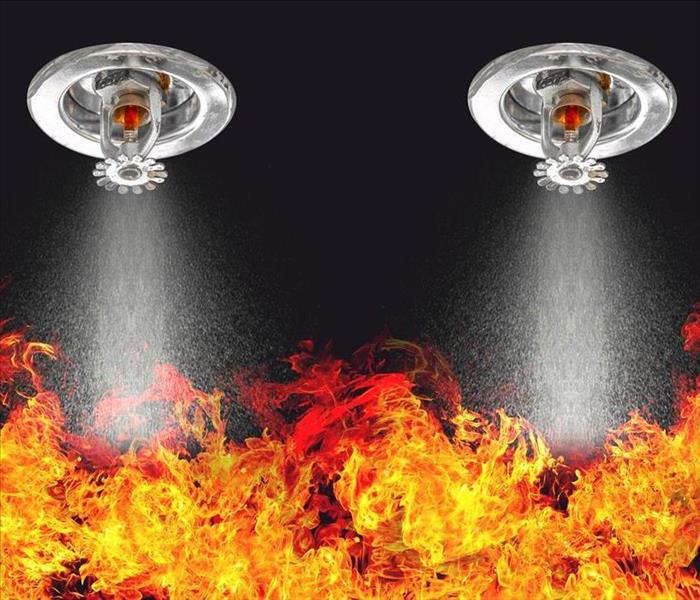 Proper sprinkler maintenance can protect your business from further damage.
Proper sprinkler maintenance can protect your business from further damage.
If not serviced properly, a sprinkler based suppression system go off accidentally, causing massive water damage to a business. You might even have to find a water remediation company in Park City, UT to repair the damage. Fortunately, there are some sprinkler maintenance tasks that you can do to avoid accidental activation.
Tasks for Fire Sprinkler System Maintenance
Schedule Regular Maintenance
Sprinkler systems have to be checked and serviced at regular intervals. Contact your systems contractor:
- When your yearly maintenance comes up
- Every fifth year for a full pipe inspection
- If a sprinkler head is damaged
- When you notice any rust or decay
Regular sprinkler maintenance by a systems contractor is essential to the health of your system. It can keep your system running correctly and save you thousands in damages due to accidental activation.
Avoid Blocking the Sprinklers
It is extremely important that the sprinkler heads remain clear of any furniture, supplies or other materials. When they are covered or hindered, they cannot put out a fire effectively. Blockages also interfere with heat and smoke sensors. Each head needs at least 18 inches of clearance between the sprinkler and anything beneath or around it.
Check Your Sprinkler Caps
You can check these yourself. The sprinkler caps are also called Fire Department Connections and are located outside of your building. These water intake caps allow your local fire department access to your sprinkler system. They can link their equipment into the network of fire sprinklers and use it to help fight the fire in your building. You will want to check these around every third month.
Visually Inspect Pipes
A visual inspection of your pipes can save you time and money down the road. Signs of rust, decay or leaks are easily spotted before they become a serious problem. Look for white edges and rust, particularly around pipe joints. These are early signs that the pipes might be failing.
An automatic sprinkler system is one of the best precautions you can have against a fire. Proper sprinkler maintenance can help keep your sprinklers functioning perfectly.
How To Administer First Aid for Burns
1/19/2021 (Permalink)
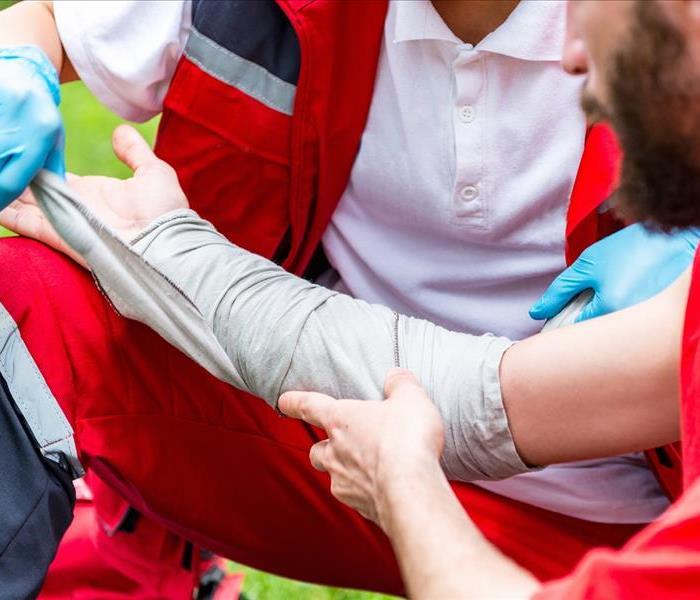 Know how to administer first aid for burns
Know how to administer first aid for burns
A fire in your commercial building in Salt Lake City, UT, not only has the potential to cause costly fire damage to the structure but also can put people in danger of burns as they try to escape. Knowing some basic first aid for burns is necessary for situations such as this.
First Aid For Burns
Severity Assessment
The first thing you must do before any burn first aid is applied is determine how severe the injury is. Look for symptoms associated with major burns:
- Deep wound
- Dry or leathery skin
- Charred area with black, brown or white patches
- Circumference larger than 3 inches
Minor Burn Care
If a small area of burned skin is merely red and hot or has a few blisters, similar to a bad sunburn, the person likely only has a minor burn. Once they are clear from the fire damage of the burning building, start by cooling the burn with running water or a cool compress. Once it has cooled completely, you can apply a soothing lotion such as aloe vera to provide comfort and keep the skin from drying out. Bandage the burn loosely with a clean, lint-free cloth or gauze. The patient can also take an over-the-counter pain reliever.
Major Burn Care
First aid for major burns is a little different. The main goal of treating a major burn is to keep the person calm and safe until professional help can arrive. After you have called for emergency medical personnel, cover the burn with a loose cloth, but don't submerge it in water. Remove any jewelry and loosen tight clothing, as major burns can cause the area to swell. Keep an eye out for signs of shock such as fainting or shallow breathing, and keep the burn elevated above the heart if possible.
Fire restoration experts can take care of the fire damage to your building, but making sure injured people get the first aid they need depends on those around them. Knowing the correct action to take can save them a lot of pain in the long run.





 24/7 Emergency Service
24/7 Emergency Service















